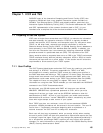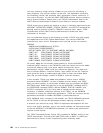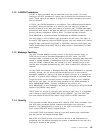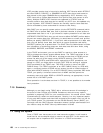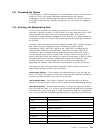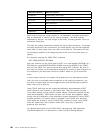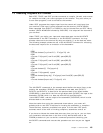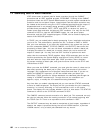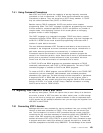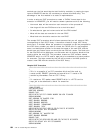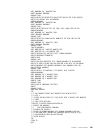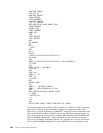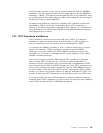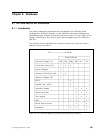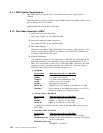
7.4.1 Using Command Procedures
Both ICCF and TSO/E provide the capability of storing frequently executed
commands or lists of commands. In ICCF these stored commands are called
Procedures or Macros. They are stored as an ICCF library member. In TSO/E
they are called Command Lists (CLIST) or REXX execs.
Besides issuing TSO/E commands, CLISTs can perform more complex
programming tasks. The CLIST language includes the programming tools needed
to write extensive, structured applications. CLISTs can perform any number of
complex tasks, from displaying a series of full-screen panels to managing
programs written in other languages.
The CLIST language is an interpretive language. TSO/E also offers a second
interpretive language, REXX. REXX is a general purpose, high-level language not
unlike PL/I. REXX has the usual structured programming instructions and a
number of useful built-in functions.
The main difference between ICCF Procedures and Macros is that macros are
executed in the foreground as normal commands and may be invoked while in
edit mode, whereas procedures are executed only in command mode.
Procedures require that execution of the procedure processor program be
started in an interactive partition, which means that a macro is processed more
quickly than a procedure. Another difference is that a procedure has more
control over the flow and execution of commands than a macro.
In TSO/E, CLISTs and REXX programs are executable sequences of TSO/E
commands, subcommands, and CLIST or REXX statements. The entire TSO/E
command language is available to CLISTs and REXX programs.
To create a CLIST or REXX program, use the ISPF/PDF editor or the TSO/E EDIT
command to put the commands, subcommands, and command procedure
statements into a data set. The data set may be either sequential or partitioned.
A sequential CLIST or REXX data set consists of only one program, while a
partitioned data set may contain more than one program. When a PDS consists
entirely of CLISTs, it is called a CLIST library. Detailed information on writing
CLISTs can be found in
TSO/E CLISTs
.
7.5 Migrating from VSE/ICCF to MVS and TSO/E
As with any new system, TSO/E will require time to learn. Many of its functions
are similar to those in ICCF but others are either entirely new, or differ enough
that you will have to change your present methods in order to implement them.
In this section we will attempt to describe how you can begin the migration from
VSE/ICCF to MVS TSO/E.
7.5.1 Converting ICCF Libraries
Although there are many methods for moving members from your existing ICCF
libraries to data sets accessible to TSO/E, in this section we will discuss just
two. The first method is to write an ICCF procedure that will create a tape file
containing the JCL and data necessary to execute the MVS utility IEBUPDTE to
create a new PDS containing the members from an ICCF library. The second
method utilizes the ICCF utility DTSUTIL to punch ICCF library members to tape.
A program would then need to be written to reformat this tape to a format that
would be acceptable to the MVS utility IEBUPDTE. The advantage of the second
Chapter 7. ICCF and TSO 163



